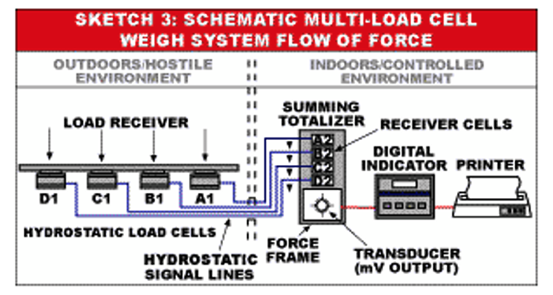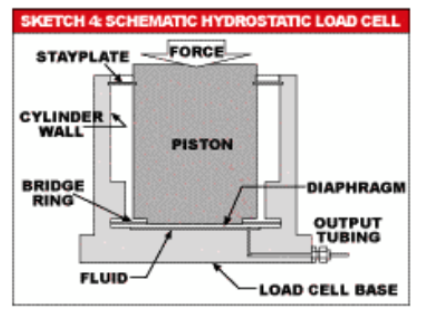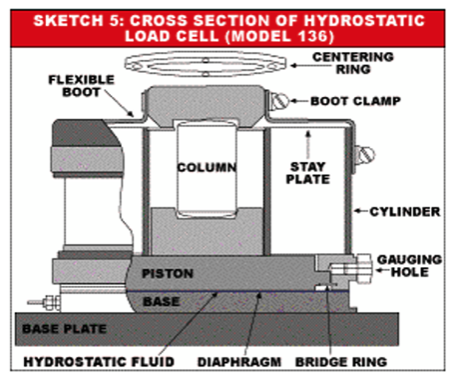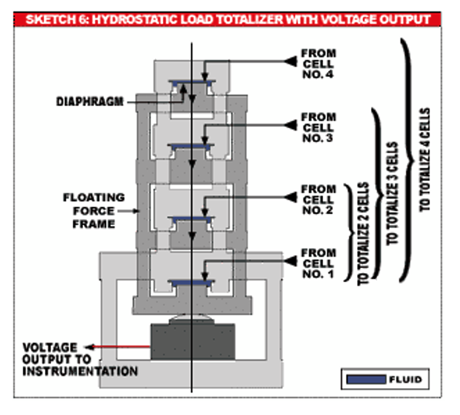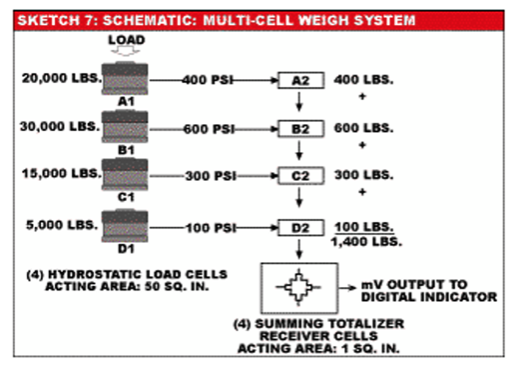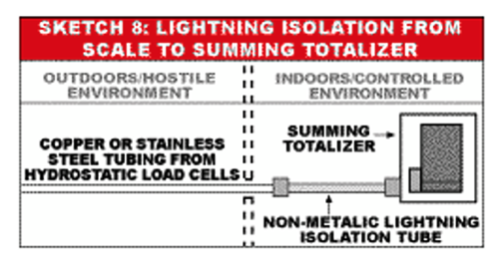
An Uncommonly Effective Technology for Difficult Weighing Applications
Hydrostatic™ Technology
Hydrostatic™ technology, an Emery Winslow exclusive, combines state-of-the-art electronic instrumentation with virtually indestructible Hydrostatic load cell weight sensing for a system with no electronics in the area of greatest potential abuse - the scale platform. Hydrostatic™ design allows the sealed Hydrostatic weight signals to be transmitted to a clean, controlled area where the signals are totalized and converted into a single electronic signal, which in turn drives the scale's digital weight indicator.
Hydrostatic™ Weighing System Sketches #1 and #2 are simplified schematics of a typical multi-load weigh system. Sketch #1 is an electronic load cell schematic and Sketch #2 is a Hydrostatic™ load cell schematic.




